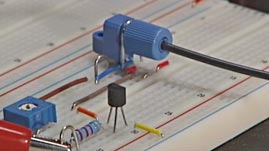Teachers' Domain - Digital Media for the Classroom and Professional Development
User: Preview

Source: The National Center for Information and Communications Technologies
In this video from the ICT Center, learn how rise-time analysis is performed to determine the maximum data rate of a fiber optic communications system. Animations and diagrams show how a transmitter, fiber, and receiver work together to transfer information and how component rise times and fiber dispersion contribute to total rise time.
Here are suggested ways to engage students with this video and with activities related to this topic.
 Loading Standards
Loading Standards Teachers' Domain is proud to be a Pathways portal to the National Science Digital Library.
Teachers' Domain is proud to be a Pathways portal to the National Science Digital Library.
